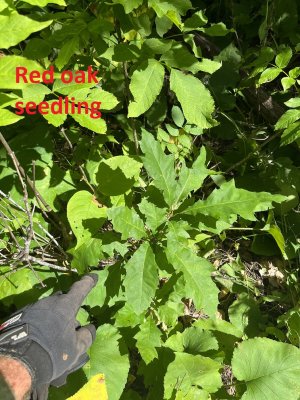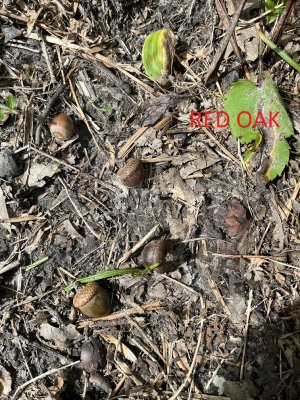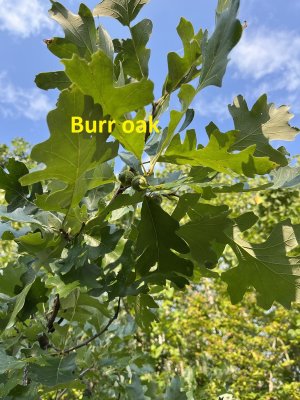I had a good talk with a habitat guy that worked for South Dakota Game Fish and Parks a number of years back. He mentioned something very interesting to me. He'd mentioned planting red cedars as an improvement. I asked him, "Isn't red cedar a listed invasive in SD?" He said yes, but only when it's growing where it isn't wanted. Otherwise, we use it quite often in habitat projects.
My bur oaks have produced twice now in the 6 years I've been watching them. If you take out this year, they have produced once in 5 years. If we're focused on durable and reliable year round food, I don't think oak fits. It's more of a bonus forage when it happens.
Again, I'm not saying let's clear cut the oaks, but an abundance of oaks doesn't make a durable and reliable food source, especially because the abundance is during a period of overwhelming abundance in the late summer. I still release oaks when I'm out busting canopy, but that's it. I have been solely focused on growing durable natural food to get deer through the winter. That means browse, and browse requires sunlight.
Ultimately, I'm not going to cut down these oaks. The reason I say that, is that I'm fairly certain they'll not produce for a few years after this year anyway, so this new problem of bear trampling should go away when the acorns quit coming. Oak leaves are the best pre-emergent grass herbicide I've found, so I do like having them around for that.



